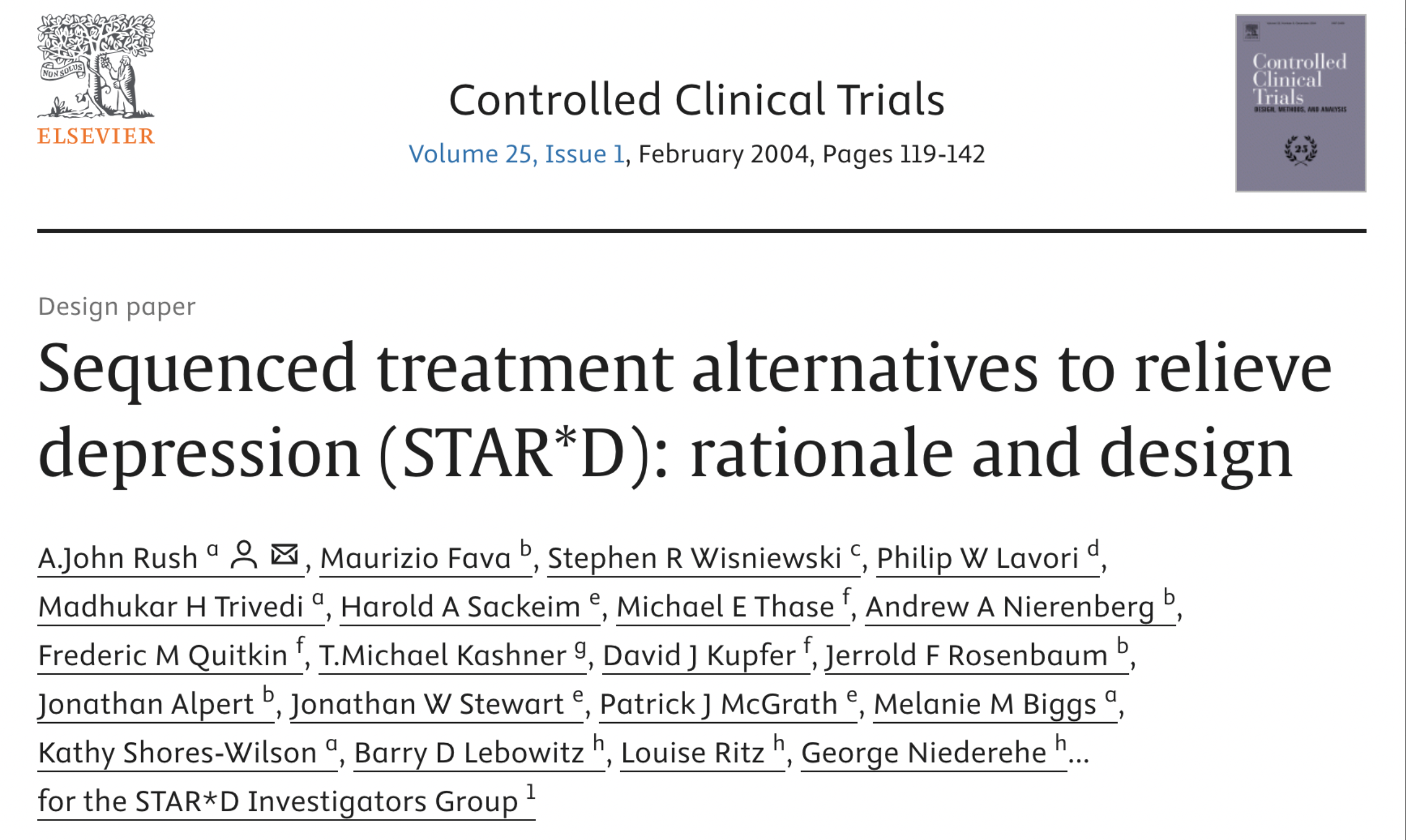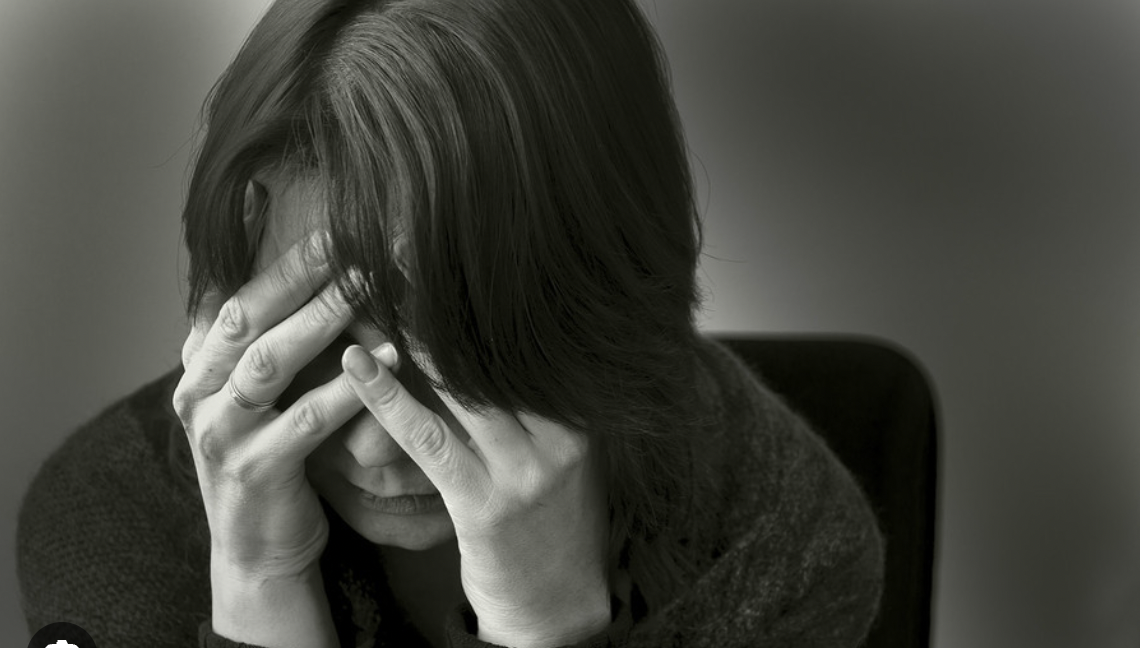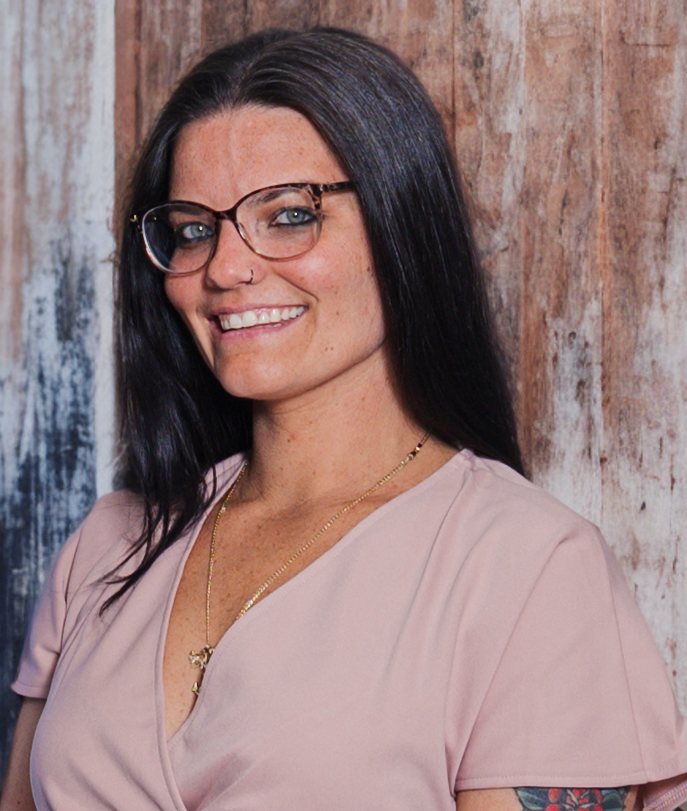Best Way to Cure Depression
Deep dive into the STAR*D Trials, which studied > 4,000 people on the steps to cure depression, published in the Journal of Clinical Psychology in 2004.

Dr. Amir Elsamadisi
Psychiatrist & Researcher

Takeaway: Depression Recovery Is a Process — Not a One-Step Fix
When I work with patients struggling with depression, I often start by prescribing a first-line antidepressant. But here’s the reality: most patients don’t spontaneously say whether it's helping. I have to ask — repeatedly. And the data backs this up. The largest study on the subject found that only about 33% of people experience significant relief from their first antidepressant.
So what happens next?
We try something else. Typically, I recommend adding cognitive behavioral therapy (CBT) or trying a different medication. CBT alone helps about 1 in 4 people who didn’t respond to their first medication. Personally, I always encourage CBT early in the process — it's just as effective as many medications and comes with fewer side effects. (Keep in mind: medications can take 5 to 12 weeks to stabilize in your system.)
If that still doesn’t work, we may add a second medication — a process called combination therapy. That helps about 1 in 10 patients who are still struggling.
Still no improvement? You’re not alone — and we’re still not out of options. The next step is to switch the medication class entirely, which helps another 10% of patients at this stage.
In other words: it’s a process, but it’s a process that works. With time and persistence, I’ve seen most patients find a treatment or combination that helps them feel better — often significantly so.
Why Should You Care?
If you’re on an antidepressant and it’s not working, talk to your psychiatrist. This is common —
in fact, 77% of people don’t respond to the first medication they try.
But that’s not the end. There’s a well-studied path forward.
There’s a plan. And there’s hope.
The STAR*D Trial is the Landmark study on depression, which studied >4,000 individuals.

Most of our knowledge today on depression is based on the findings from the STAR*D trial, the largest trial done on depression patients ever. In this blog, we break down what the data says, and what it means for treating depression today.
The Clinical Data:
The STAR*D trial followed over 4,000 adults with major depressive disorder who didn’t respond to the first antidepressant (citalopram). The findings revealed important results:
In Step 1: 33% of patients showed significant improvement with citalopram(a classic antidepressant), meaning they no longer experienced the full range of depressive symptoms.
In Step 2, switching to another antidepressant or adding CBT (cognitive behavioral therapy) improved remission rates by another 24–30%.
*CBT was shown to be as effective as switching or augmenting with another medication — with fewer side effects.
In Step 3: Around 10–20% more patients improved when a second agent was added.
In Step 4: A final 13–16% of patients improved after trying a combination of two antidepressants or switching to another class of antidepressants (monoamine oxidase inhibitors).

Study Design: How They Figured This Out
- Population: 4,041 adults aged 18–75 with non-psychotic major depression
- Setting: 41 clinics across the U.S. (23 psychiatry, 18 primary care)
- Duration: Each of four levels lasted up to 14 weeks
- Assessment Tools: Depression was tracked using validated symptom scales (QIDS-SR16 and HAM-D17)
- Patient Choice: People could switch medications or augment their current one based on preference and tolerability
CBT was introduced at Level 2 as both a standalone treatment and an augmentation strategy, giving patients a non-medication route to continue treatment. This flexibility mirrors modern, collaborative care approaches.
Why This Study Changed My Practice:
As a psychiatrist, I always hear patients say, “This medication didn’t work — something must be wrong with me.” STAR*D changed how I talk about expectations. One med isn’t always enough, and that’s not a failure — that’s the norm. More importantly, this trial validated therapy, especially CBT, as an essential option when medications alone aren’t enough.
Now, I emphasize the process:
- We start with one treatment — then we adapt, build, and personalize. STAR*D made it clear that persistence, flexibility, and patient-centered care lead to results.
- CBT is a powerful clinical tool — particularly for those sensitive to side effects, or hesitant about more meds.
What Patients Should Know:
- Don’t give up if the first medication doesn’t work — you’re not alone.
- CBT is as effective as a second medication, and it’s often better tolerated.
- Each step you take increases the chance of remission — even if it feels slow.
- STAR*D proves that healing isn’t linear, but it is achievable.
Final Thought:
The STAR*D trial reshaped how we understand and treat depression. It proved that recovery often takes multiple steps — and that’s okay. If you’re stuck or frustrated, it doesn’t mean you’re out of options. It just means you haven’t reached the step that’s right for you… yet.






